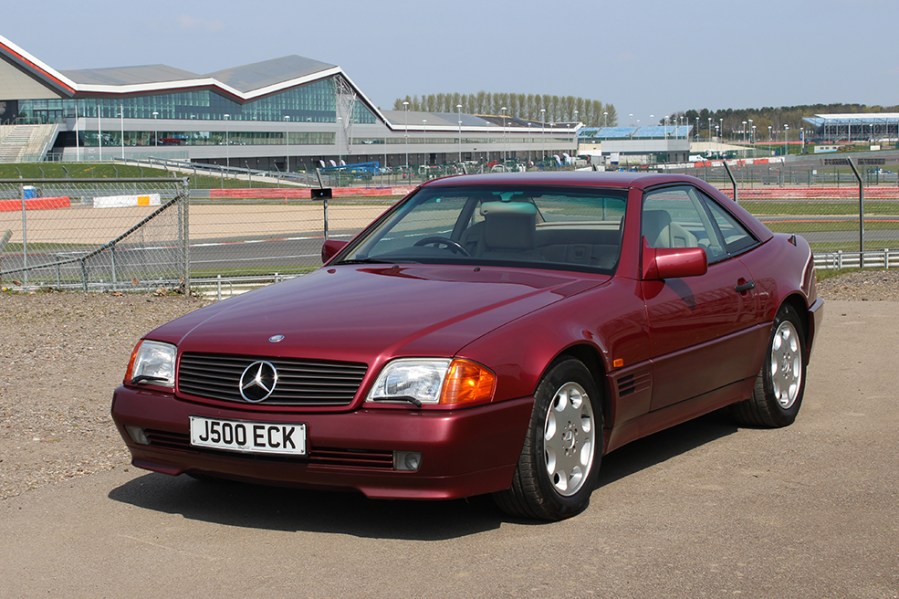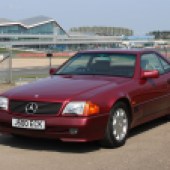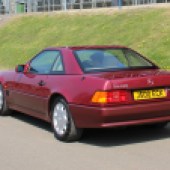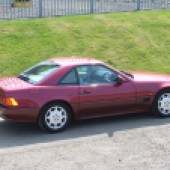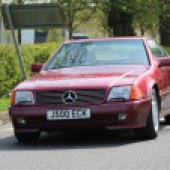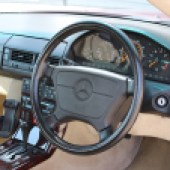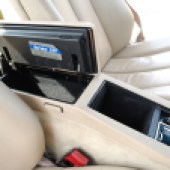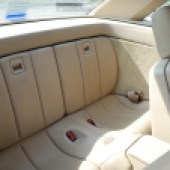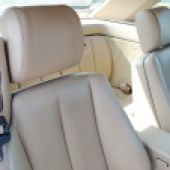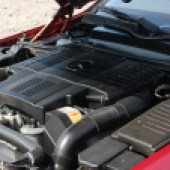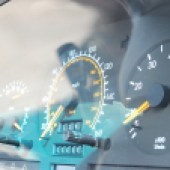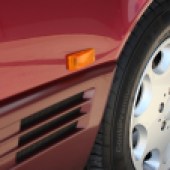The R129 SL was a very modern take on an established recipe when new, but now it’s an undisputed classic. Here’s how to buy a great one
Words: Aaron McKay
Sponsored editorial in association with Lancaster Insurance
The R129 SL represented a huge step forward from the long-serving R107 and instantly secured its place as a landmark model in the SL lineage. Today it remains a natural choice for anyone after an open-topped grand tourer that blends ability with that indefinable touch of magic. The question is – which one to choose?
The puzzle begins with the wide spread of R129s produced between 1989 and 2001. The launch line-up comprised two straight-sixes and a V8, with the flagship V12 joining in 1991. Targeted squarely at the Porsche 911 and Jaguar XJS (later the XK8), this was very much a luxury sports car with a strong touring brief.
The entry-level 300SL used a 3.0-litre, 12-valve straight-six producing 190bhp. Some labelled it underpowered, others praised its smoothness – opinions remain split. The 300SL-24, with its then-new 24-valve head, boosted power to 231bhp but only really came alive at higher revs, though refinement was excellent. While derided at launch as poor value, today it may justify the extra £1000 or so it commands over the base car.
Among enthusiasts, the consensus is clear: once you sample the 500SL, it’s hard to go back. Its 5.0-litre, 32-valve quad-cam V8 delivered 322bhp and is widely seen as the sweet spot, even rivalling the mighty 600SL. The V12 was far costlier when new and sold in much smaller numbers, making it both rarer and more expensive today. It offered outstanding refinement, 394bhp, and near-limitless equipment levels.
In 1993, Mercedes updated the nomenclature to the SL prefix and resized the six-cylinder engines. Thus, the SL280 arrived with 193bhp thanks to its 24-valve head, while the SL320’s larger bore and stroke gave it 229lb.ft of torque – more than the 300SL-24, and delivered at a lower 3750rpm. The V8 and V12 figures barely shifted, though the 500SL quietly lost its full-throttle enrichment system, trimming peak power to 316bhp.
Throughout its life the R129 gained numerous updates and optional extras, making period brochures or simply opting for a well-equipped later car worthwhile. Key changes included the 1994 adoption of the electronically controlled 722.6 five-speed automatic, replacing the old four-speed and 722.5 four-plus-overdrive units. The two-tone bumpers disappeared in 1995, with the three side vents behind the front wheels replaced by two rounded ones. Automatic wipers were standardised in 1996, and in 1998 equipment levels improved across the range.
The most visible facelift came in 1998. Externally, 17-inch alloys became standard, joined by redesigned bumpers and tail-lamps. Inside, buyers gained new seats, chrome-ringed dials, and a softer steering wheel design. A Sport package also appeared, offering larger wheels and a broader bodykit.
Most significant, though, were the new engines. Mercedes introduced its latest single-cam-per-bank V6s and V8s with three valves per cylinder, while the trusty V12 soldiered on to the end. Outputs stood at 204bhp for the SL280, 224bhp for the SL320, and 306bhp for the SL500. Strong as they were, some enthusiasts felt these units lacked the character of the older generation.
Mercedes R129 SL values
R129 SL values cover a broad spectrum, making them an increasingly attractive modern classic. Projects and rough runners can still be found from around £2500, though recommissioning costs often outweigh the purchase price. Usable six-cylinder cars typically command £5000-£10,000, offering accessible ownership prospects and strong reliability. The 500SL/SL500 sits at the sweet spot, with solid examples between £10,000-£20,000, combining performance and refinement. The rare V12-powered 600SL/SL600 carries a significant premium, with top-condition cars exceeding £40,000. The very best low-mileage, fully equipped later models are now climbing fast, reflecting growing collector demand.
Insurance Costs
1996 Mercedes SL500, £11,000 value.
Example quote: £323.00 or £341.00 with Agreed Value.Quotation supplied by Lancaster Insurance. Tel: 01480 400761
Quote based on a 45-year-old marketing manager, access to another car, no claims or convictions, club member, 3000 miles per year, no modifications, living in SP2 0HL. Disclaimer: Subject to underwriting criteria. An additional charge may be payable. Authorised and regulated by the Financial Conduct Authority.
Bodywork
Some say the finish on the SLs was superior to any other Mercedes of the era, and while that may well be true, the main reason they are generally in better condition than their contemporaries is that many have spent long periods in garages and seen lighter use. That said, there are still areas where rust can creep in.
Pay particular attention to both wheelarches, especially the rear ones, and the leading edge of the bonnet on higher-mileage examples. Hardtop seals can also trap moisture, so inspect the edges carefully and ensure the roof fits and removes smoothly.
The optional panoramic roof appears more prone to damage, both from water ingress at the rear and from mishandling when removed, as it is significantly heavier than the standard roof.
Also check beneath the boot floor for water, which can enter via the rear high-level brake light and linger. If concerned, examine underneath for any evidence of long-term corrosion. Sills and strut towers are generally sound, but inspect the brake lines for rust, as replacing these involves the labour-intensive removal of the rear subframe.
Other items to inspect include headlamp lenses and their wipers, particularly the motors, which are surprisingly costly to replace. Wheels are usually in very good condition, but genuine replacements can be hard to find and expensive, so think carefully about kerbing damage.

Engine and transmission
It’s generally accepted that the earliest cars currently give buyers the most headaches, although they aren’t deal-breakers. On all early examples, check that the notorious wiring looms are in sound condition and not brittle. The so-called biodegradable wiring also affects the throttle body loom on early M119 V8s, and when it fails, it can cause rough running and interfere with the stability control (ASR).
The very first of these, those badged 500SL, also tend to suffer from failing distributor caps and issues with oil supply to the tappets. Meanwhile, it’s actually the mid-range straight-sixes in the SL280 and SL320 that attract the most negative reports, usually due to head gasket leaks – particularly at the front or rear of the block.
Later engines haven’t drawn as many complaints, though this may simply be because they are up to ten years younger. Common faults to watch for include failed MAF sensors and worn crank pulleys on V6 models.
Many argue that the five-speed 722.6 gearbox isn’t quite as robust as the earlier four-speed with optional overdrive, but that’s only partly true. Its main weakness is a typical oil leak at the front of the box, where the ECU plug connects. Replacing the worn seals is straightforward and inexpensive, but replacing the ECU can be costly if it is damaged by any oil ingress. Gearbox fluid should be changed at around 40,000 miles, regardless of what the handbook advises.
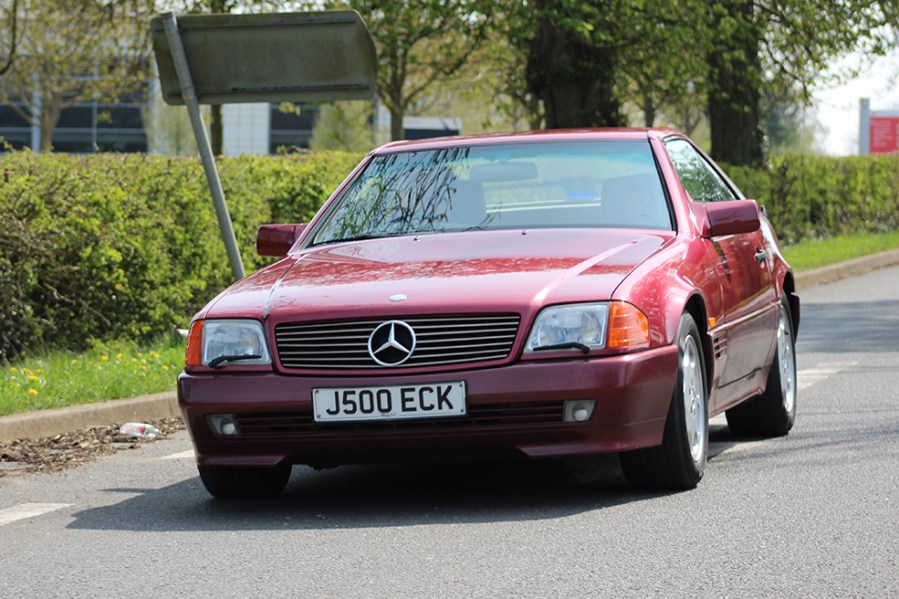
Steering, suspension & brakes
The R129 SL is softly sprung yet tightly damped, with suspension that preserves consistent geometry across a wide range of movement. It delivers excellent ride and handling, even with the V12, which can push the weight beyond two tonnes. AMG variants, meanwhile, are subject to greater stresses and feature more costly components.
It’s crucial to check for worn dampers and bushes, particularly at the front, where ball joints and top mounts also endure significant strain. The steering system – including the steering idler, damper, and drag link – can likewise wear and develop play.
Rear springs commonly fail at the bottom, so inspect there if a coil appears broken. At the rear, trunnion bushes are another frequently replaced item, often revealed by wear on the inner edges of the rear tyres. Regarding tyres, most specialists and enthusiasts favour Michelin Pilot Sports, so seeing a car fitted with these is always encouraging.
Brakes on SLs are prone to wear, so their condition deserves careful attention. Disc sizes increased over the years, with SL600 and SL60 AMG models receiving the largest, while later Silver Arrow editions were equipped with special Brembo calipers – though these bring higher replacement costs.

Interior and roof
This is a textbook example of ‘it ought to work’, and if it doesn’t, fixing it can be a real headache. Tracking down the source of an electrical fault can be incredibly tricky, so when inspecting a potential car, make sure everything functions correctly from the outset. Air conditioning deserves a special mention here, with even used replacement compressors costing around £250, so be cautious if anyone insists it just needs a simple regas.
Before using the roof, it’s worth checking the fluid level beneath the spare wheel. If it’s low, that could explain a reluctance to close. If it fails completely, the culprit may be a faulty Roof Control Module – located under the rear seat, these typically cost over £500 to replace. While inspecting the roof, don’t be overly concerned about a hazy rear screen, as these are generally easier to replace than expected.
The interior trim is usually robust, living up to the classic Mercedes-Benz reputation. There are some weak points, though, often the result of Stuttgart being a little too ingenious.
Elegant features, such as the cantilevered glovebox, are susceptible to impact from knees and are known to break, as are the adjuster for the sliding centre console, the air vent direction controls, and the vanity mirror hinges. The backs of sun visors can also crack at the top due to prolonged exposure to strong sunlight.
For anything that doesn’t operate correctly, check parts availability. For instance, if a seat belt doesn’t retract smoothly, locating a replacement reel assembly can be a real challenge.
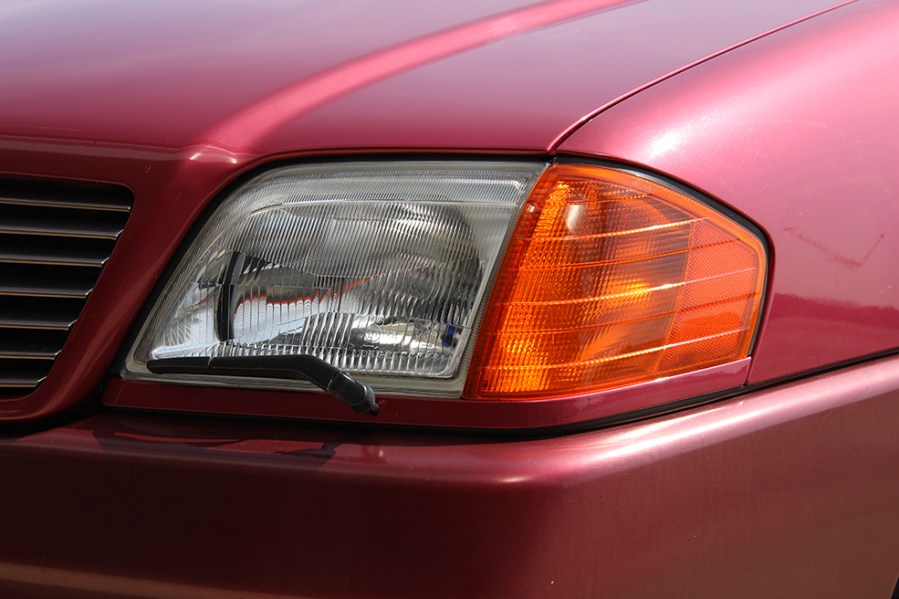
Mercedes SL (R129): our verdict
The Mercedes SL is a classic, not just as a car but as a heritage, stretching all the way back to the original 1954 model. The R129 SL offers a very sensible entry into this history of elegant roadsters: well-built, easy to drive, and backed by strong support from numerous clubs and specialists, there’s little to deter a potential buyer.
It isn’t exactly a sports car, yet few rivals match the R129 for its blend of comfort, stylish good looks, and long-distance GT appeal – whether the roof is up or down.
Mercedes SL (R129) timeline
1989
Mercedes unveils the R129 SL at the Frankfurt Motor Show, introducing a sleek new design, aluminium body panels and advanced safety
1990
Series production begins, with the 320SL and 500SL marking the start of a diverse engine lineup
1992
The 500SL receives a minor update with improved interior trim and optional multi-function steering wheel
1993
High-performance SL600 with V12 engine joins the range
1995
R129 benefits from suspension and electronics upgrades, improving ride comfort and handling finesse
1998
Facelift brings revised headlights, bumper design, and updated interior switchgear
2001
Production of the R129 ends, with over 237,000 units built, cementing its reputation as a comfortable, stylish and enduring grand tourer

